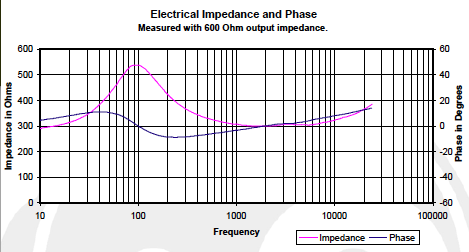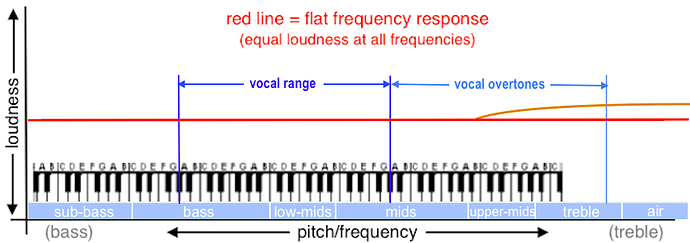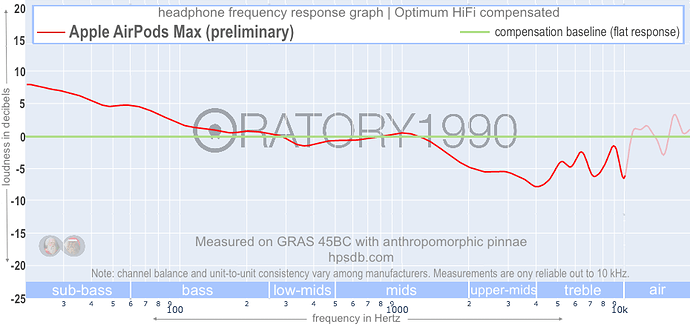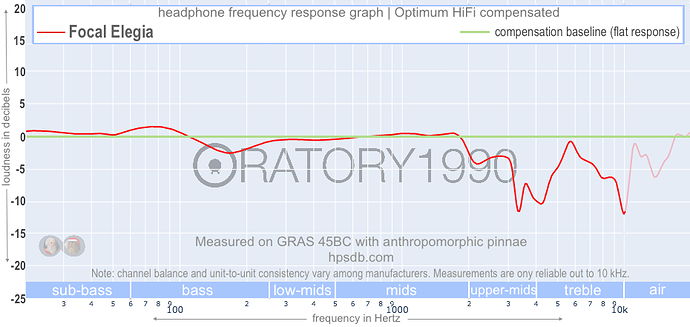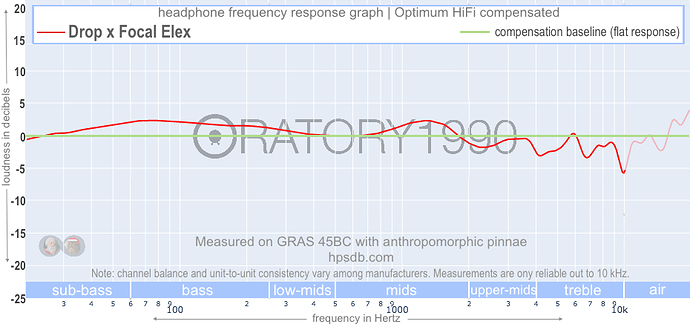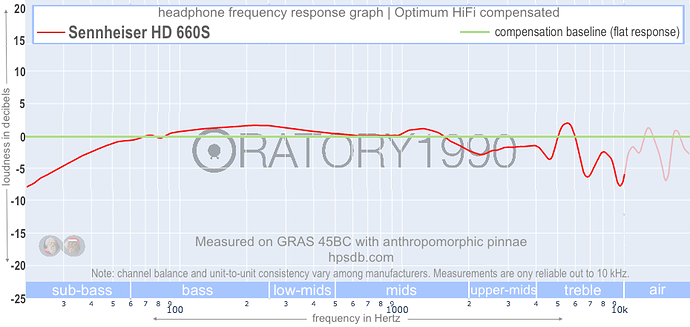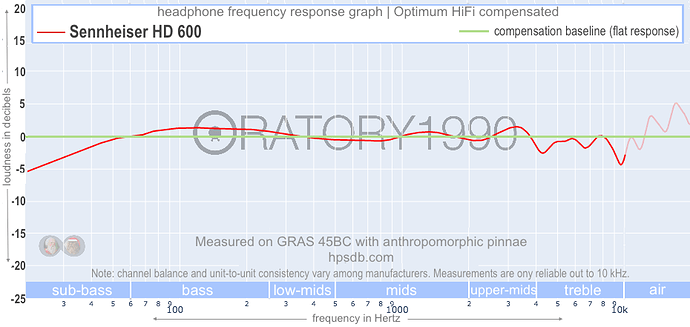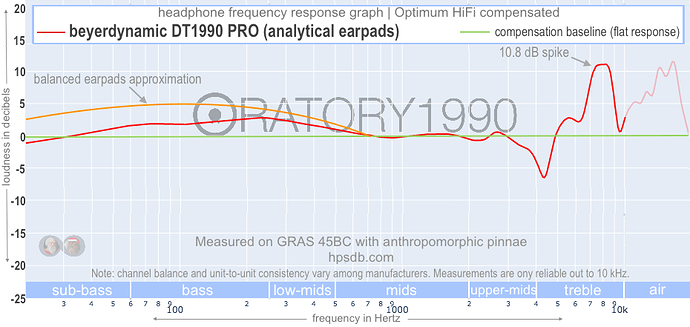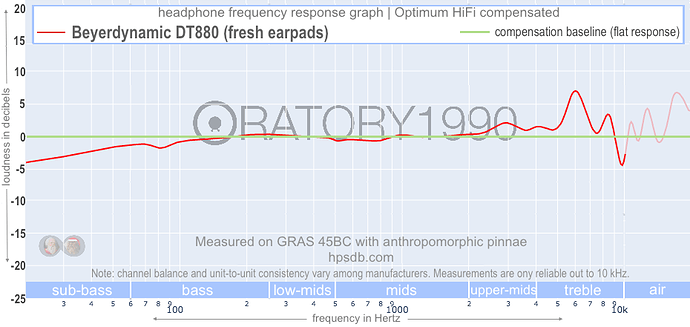OK, I’m a fellow Ontarian and am also no stranger to not being able to try before buying.
First, an FYI: Amazon has sophisticated algorithms in place to flag customers who exceed their idea of fair use of buy-and-return. Once they flag a frequent offender, they try to lose him as a customer by sending damaged open-box items, etc. This may apply to other vendors as well. The upshot is I try to avoid over-use of buy-and-return. This has led me to develop a pretty heavy-duty approach to researching headphone purchases. On the off-chance you’re up to a deep dive, here goes:
The first thing is to calibrate your hearing and frequency response preference. Assuming your Vanatoos are not being influenced by room gain, then in theory your preference is something like this:
It’s quite possible your treble increase to the Vanatoo extends somewhat further towards the mid range. IAC, compare this with the only graph I could find for the Pioneer:
Tech note: to transform a headphone response graph into one that shows a flat-line frequency response as a straight line, a correction factor (compensation) needs to be applied. The graph for the Pioneer doesn’t specify what compensation was used, and they can vary all over the map, but the graph seems to be roughly in line with your description. For comparison, the Air Pods Max graph with a valid compensation looks like this:
IOW, roughly the same idea. Now let’s look at some of the headphones mentioned in this thread:
Vocal range looks great, but there’s a lot of fall off in the vocal overtone range. This is on purpose. One of the biggest complaints headphone manufacturers likely receive is piercing highs in the sibilance range (roughly the lower part of the treble just after the upper-mids).
Closer…
About the same as the Elex…
As befits its reputation, the HD 600 is excellent throughout the vocal range. The slight elevation in the bass sometimes bothers me with some tracks, but most people seem to actually prefer it.
Now, the graph of the 1990s, even with the analytical ear pads, looks like the bass elevation should be a problem, but I don’t hear it as being any more of a problem than the HD 600s. In part because it has an intrinsically tighter, clearer sound (at least, straight out of an iPhone). OTOH, the huge loudness spike at the far end of the sibilance region can be a show stopper for a percentage of the population. This seems to be due to natural variability in ear canal shape.
The best match to your needs I can find, is another beyerdynamic, the DT 880:
Here, the potential problem is the loudness spike right in the heart of the sibilance range, which again may or may not affect you negatively. From all I can tell the DT 880s (250 Ohm version) don’t have quite the detail clarity of the DT 1990, nor the superb the all-metal build quality.
Another consideration that’s important to a lot of people is stereo sound stage. Most people find that the Sennheisers have a small, in-your-head soundstage, the Focals not a lot bigger, but more precise, while the beyers are bigger yet and quite good in precision.
Yet another consideration is dynamics. All these headphones are good at this, with the Focals be outstanding at it.
Then there’s power requirements. Both the manufacturers’ specifications and my own experience say the HD 600 and DT1990 can be pushed to rock concert loudness (+100 dB) straight from the iPhone. What an external amp does is tame the impedance spike dynamic driver headphones such as these have in the bass region. As an example, here’s the HD 600’s impedance curve (magenta line):
